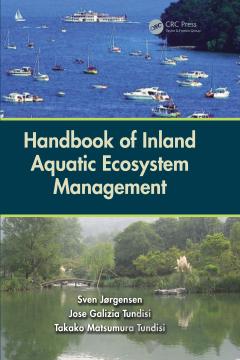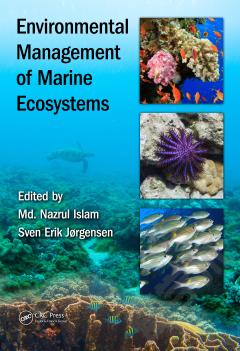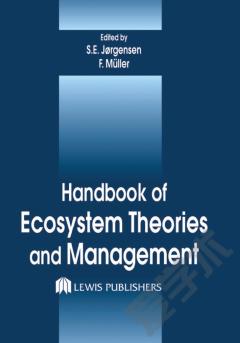Handbook of Inland Aquatic Ecosystem Management
Part I Limnology and Ecology of Inland Waters Overview of Inland Aquatic Ecosystems and Their General Characteristics Introduction: A Short Overview Reservoirs in Brazil: An Example of Large-Scale Construction of Artificial Aquatic Systems Lakes and Reservoirs as Ecosystems Lakes and Reservoirs Have Many Interactive Factors Pulse Effects in Lakes and Reservoirs Vertical and Longitudinal (or Horizontal) Processes in Reservoirs and Their Complexity Differences between Lakes and Reservoirs External Nutrient Loading and Nutrient Dynamics Succession in Lakes and Reservoirs Lake and Reservoir Sedimentation Shallow Lakes Future Research Needs for Lakes and Reservoirs as Tools for Advanced Management of These Ecosystems Eutrophication Problem Growth of Phytoplankton Solutions to the Eutrophication Problem Reservoirs and Lakes as Complex Systems and They Require an Integrated Management Plan Physical Processes and Circulation in Lakes and Reservoirs Introduction Physical Processes Potential Energy and the Turbulent Kinetic Energy Transport Process in Lake and Reservoir Stratification and the Circulation of Lakes and Reservoirs and the Ecological Processes Classification of Lakes Reservoirs Lake Morphometry and Lake Forms Rivers as Ecosystems Physical Characteristics: Horizontal Gradients Biogeochemical Cycles Aquatic Biota of Rivers Energy Flux and Food Chains Large Rivers River Fisheries Small Creeks and Streams Ecological, Economical, and Social Importance of the Rivers: The Hydrosocial Cycle Human Impacts on River Ecosystems Estuaries and Coastal Lagoons as Ecosystems Introduction Classification and Zonation of Estuaries Environmental Factors Aquatic Biota of the Estuaries Freshwater Inflow into Estuaries Primary Production in Estuaries and Coastal Lagoons Anthropogenic Impacts on Estuaries Wetlands Introduction: The Importance of Wetlands Ecosystem Services by Wetlands Types of Wetlands and Wetland Processes Constructed Wetlands Natural Wetlands Tropical Freshwater Ecosystems Tropical Lakes and Floodplains of the South American Continent Continental Waters of Tropical Africa Floodplains and Wetlands in Asia Tropical Freshwater Environments Freshwater Temperate Lakes and Reservoirs Introduction English Lake District Laurentian Great Lakes in North America Japanese Lakes Reservoirs in Temperate Regions Application of the Conservation Principles Mass Conservation: An Important Basic Principle Threshold Levels Steady State and Equilibrium Basic Concepts of Mass Balances Mass Conservations in a Food Chain Hydrological Cycle Application of Aquatic Chemistry in Environmental Management I: Calculations of Equilibria Equilibrium Constant Activities and Activity Coefficients Mixed Equilibrium Constant Classification of Chemical Processes and Their Equilibrium Constants Many Simultaneous Reactions Henry's Law Adsorption Biological Concentration Factor Application of Aquatic Chemistry in Environmental Management II: Equilibrium Calculations of the Four Types of Reactions Double Logarithmic Diagrams Applied on Acid-Base Reactions Molar Fraction, Alkalinity, and Buffer Capacity Dissolved Carbon Dioxide Precipitation and Dissolution: Solubility of Hydroxides Solubility of Carbonates in Open Systems Solubility of Complexes Stability of the Solid Phase Complex Formation Environmental Importance of Complex Formation Conditional Constant Application of Double Logarithmic Diagrams to Determine the Conditional Constants for Complex Formation Redox Equilibria: Electron Activity and Nernst's Law pe as Master Variable Examples of Relevant Processes in the Aquatic Environment Redox Conditions in Natural Waters Construction of pe-pH Diagrams Redox Potential and Complex Formation Future of Limnology and Aquatic Ecology as a Tool for Management of Inland Waters Our Demand to Limnology and Aquatic Ecology Part II Holistic, Environmental and Ecological Management Impacts on Watersheds and Inland Aquatic Ecosystems Environmental Problems, Their Sources, and Evaluation of Impacts Impacts Impacts of Climatic Change on Aquatic Ecosystems Integrated Ecological and Environmental Management Introduction Ecological and Environmental Management Procedure Tool Boxes Available Today to Develop an Ecological-Environmental Diagnosis Tool Boxes Available Today to Solve the Environmental Problems Follow the Recovery Process Implementation of the Presented Ecological and Environmental Management Procedure in Practice on Inland Water Ecosystems Conclusions about Integrated Environmental and Ecological Management of Inland Water Ecosystems Application of Environmental Technology in the Environmental and Ecological Management Introduction Wastewater Treatment: An Overview Municipal Wastewater Combinations of Methods for the Treatment of Municipal Wastewater (Reduction of BOD5) Methods for the Treatment of Municipal Wastewater (Reduction of Phosphorus Concentration) Methods for the Treatment of Municipal Wastewater (Reduction of Nitrogen Concentration) Application of Cleaner Technology in Environmental and Ecological Management Introduction Application of Life Cycle Analyses and Cleaner Technology Recycling and Reuse: Green Tax Application of Ecotechnology in Ecosystem Management of Inland Waters Ecotechnology: Definition and Classification Application of Class 1 and Class 2 Methods in Ecotechnology Ecotechnology: Restoration Methods Selection of the Most Appropriate Methods or Combination of Methods in Environmental and Ecological Management: A Conclusion of Chapters 14 through 17 Example to Illustrate the Selection of Pollution Abatement Methods Conclusions Application of Ecological Indicators in Environmental Management of Freshwater Ecosystems Introduction Tools to Synthesize and Overview: Models and Indicators Ecological Indicators: Application and Classification Emergy and Exergy Selection of Ecological Indicator Case Study Application of Ecological Models in Management of Aquatic Inland Ecosystems Models as Tools in Ecological Management Institutionalized or Mediated Modeling Model Selection Models as a Strong Management Tool: Problems and Possibilities Eutrophication Models Toxic Substance Models Acidification Models Wetland Models Fisheries Models Structurally Dynamic Models Index Chapters include references.
{{comment.content}}








 京公网安备 11010802027623号
京公网安备 11010802027623号